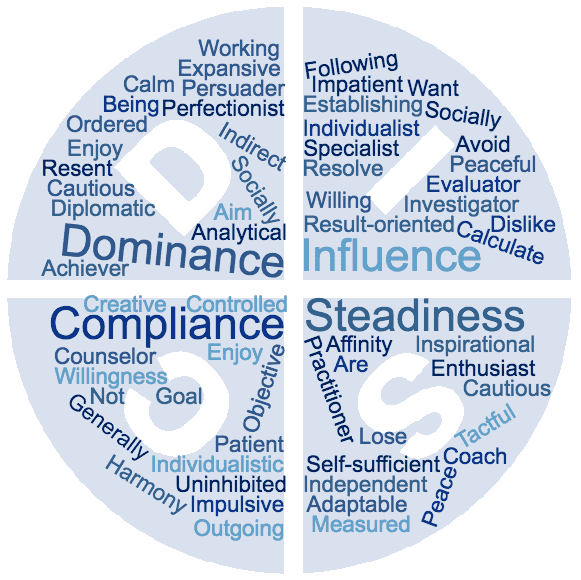May 29, 2020
Personality Styles
Are you getting to see more of your co-worker’s – or roommate’s – personality during this pandemic? We hope after this quick overview, the reactions coming from whomever you are dealing with on a daily basis will make much more sense.
Then you, in turn, will be able to provide more grace. That might be grace for a co-worker, subordinate, spouse, or _________ {you fill in the blank.} Note, you can put yourself in the blank!
Miller Management’s Training & Consulting division provides a course on “Discovering, Valuing, and Working with Diverse Personality Styles” based on the DISC behavioral assessment. We will go over these types in their most basic form and give an analogy to help us cope with the conflict that may be arising all around us.
Pandemic or no pandemic, conflict is always around.
Overview of the Different Types
The DISC model is a behavioral assessment that breaks down your personality into a D, I, S, or C. The categories are represented by Dominance, Influence, Steadiness, and Compliance.
Imagine going river rafting with three of your co-workers. Each of you represents a different behavioral type from this model. Based on this, here are a few conversation snippets you might hear on this trip…
D: “The Mad Paddler” – might be found saying:
“Come on, stroke, stroke, stroke, we can beat the other canoes there!”
I: “The Splasher” – might be found saying:
“Can we stop here and play in the water a while?”
S: “The Life Preserver” – might be found saying:
“Would anyone like my .8 portion of a soda?”
C: “The Mapper” – might be found saying:
“Ok, I just want to review our inventory of supplies one last time before we leave.”
Can you figure out which personality type you most relate to just by reading the title and that snippet of conversation?
We thought so. 🙂 Feel free to share your one-liner on Facebook, we’d love to hear which one you most relate you.
What do we do with this information?
Now, let’s go over an abbreviated version of where we go from here. The first step is to find the value that each personality style can bring to the table. Inside that value, then you learn how to:
- Practice Communication
- Find the Correct Placement and
- Manage Expectations: Yours and Theirs
There are natural barriers to getting to the accepting and valuing of other’s personality styles. So while we are figuring this out, make sure to give everyone some extra grace. If you need help in this area, our how-to is covered in-depth inside our workbook matrix.
Once we can appreciate what other people can bring to the table, learn how to communicate effectively with them, and manage everyone’s expectations; you may be surprised at how well conversations, productivity, and conflict resolution are achieved.

Stay Connected